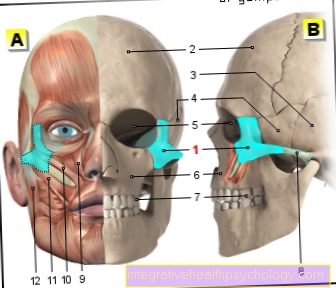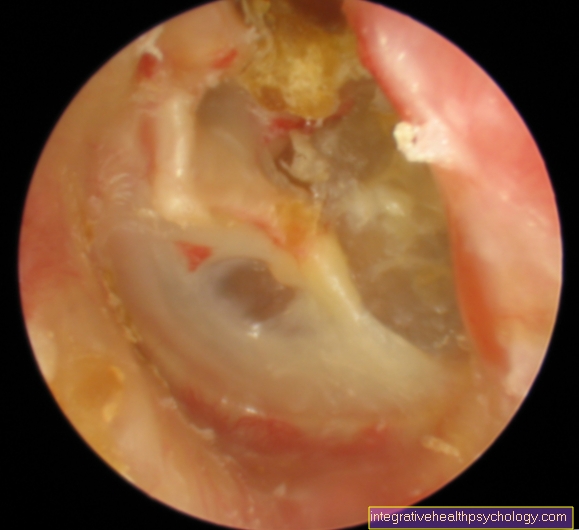Plica suprapatellaris
definition
The plica suprapatellaris is a protrusion of the mucous membrane of the knee capsule in front of the kneecap. There are various plicae in the knee joint, which are named differently depending on their location in relation to the kneecap.

In addition to the suprapatellar plica, one can also choose between one Infrapatellar plica, Plica mediopatellaris and the lateropatellar plica differentiate. The plicae are not present in all humans and represent a relic from the human embryonic period. The plica suprapatellaris is the least common in humans.
Also read: Plica anatomy
anatomy
Like all real joints in the human body, the knee joint also has one capsule. Variations in the development of the capsule cause the capsule to bulge in different directions in some people. These bulges are called plicae. The naming of the plica is based on its position in relation to the kneecap. According to this principle, the plica suprapatellaris is in front of / above the kneecap, the plica infrapatellaris under the kneecap, the plica mediopatellaris on the inside of the kneecap and the plica lateropatellaris on the outside of the kneecap. Depending on the extent and location of the plicae, the patient can experience problems in the knee joint.
The most common Plica mediopatellaris symptomatic. Patients complain of a feeling of pressure and pain when moving the knee. Sometimes the plica can even be felt from the outside. The suprapatellar plica is a rarity and affects only a minority of patients. The plica suprapatellaris can also be palpated from the outside.
Also read: Symptoms of Shelf Syndrome
function
The plica suprapatellaris represents a bulging of the joint capsule in the area of the knee joint. As an embryonic relic, it has no direct function. The joint capsule itself, however, is essential for the functioning of the knee joint. On the one hand, it represents a kind Protective sheath against external influences on the knee joint. Furthermore, the capsule forms the so-called Synovial fluid (Synovia), which is important for smooth movement. In addition, the joint capsule, along with the ligaments and muscles on the knee, is an important factor for the stability of the knee joint. Without a joint capsule, the knee would not be functional.
Symptomatic suprapatellar plica
If a person actually has a suprapatellar plica, problems rarely arise. Overall, the suprapatellar plica is only very sporadic among the population.
However, if a suprapatellar plica is so strongly developed that it impairs the function of the knee joint, this is primarily expressed by a feeling of pressure or pain in the area of the kneecap. The symptoms often occur when moving the knee, but can also lead to problems when the patient is at rest if the findings are large. In some people, the suprapatellar plica can even be felt from the outside.
Further information also under our topic: Plica syndrome
Suprapatellar plica on MRI
The suprapatellar plica is rarely symptomatic in humans and is therefore only very rarely diagnosed by MRI. After an examination of the knee by an orthopedic surgeon, the latter can express the suspected diagnosis and request an MRI. Frequently, however, the question of a suprapatellar plica is rarely asked, it is more of an incidental finding. Since the suprapatellar plica can also be quite small, it cannot always be seen in the MRI or is easily overlooked. In addition to arthroscopy, however, MRI is one of the most useful methods for diagnosing plica syndrome.
Read more on the subject in our Orthopedics section at:
- MRI of the knee
and - knee





























